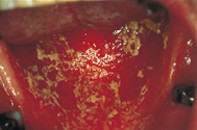Peer Reviewed
Feature Article Infectious diseases
HIV infection in adults: shared and acute care
Abstract
HIV drug therapy continues to evolve, leading to improved prognoses and increasingly complex treatment regimens. The potential for adverse side effects and drug interactions needs to be recognised by doctors dealing with patients infected with HIV. Awareness of postexposure prophylaxis, counselling issues and clinical presentations is essential.
Key Points
- HIV antibody testing needs to be repeated 12 after the last at-risk event in order to avoid a false negative result.
- Pretest counselling should include discussion about: what a negative and positive test means, how HIV is transmitted and what can be done to prevent transmission, and an individual’s risk of HIV and other infections. Confidentiality and arrangements for obtaining the result should also be discussed.
- If an individual has a history of exposure to HIV within 72 hours and the risk is significant (for example, unprotected intercourse or a needlestick injury), urgent consultation with a specialist is recommended with a view to postexposure prophylaxis.
- A recent CD4 cell count is the best predictor of current HIV-related disease. Viral load tests are used primarily to decide when to initiate or change antiretroviral treatments.
- For patients on antiretroviral drugs, special attention must be given to the administration of other medications because drug interactions are frequent and sometimes dangerous. Access to a current data source is recommended because the number of known interactions is increasing.
- As the number of drugs used in combination therapy increases, the possibility that a symptom may actually be an adverse reaction also increases.

